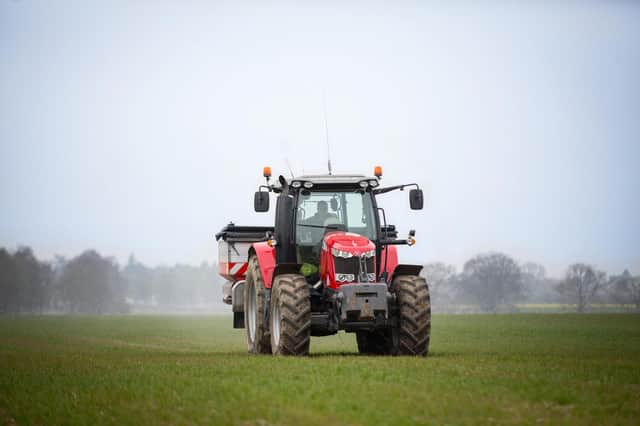Farming: Sector’s agflation costs are dwarfing inflation


That was the finding of the Anderson’s Centre’s latest agflation estimates for June which continued to highlight how farm costs had soared since the onset of the Russia invasion of Ukraine in February, reaching levels not seen for decades.
The farming consultant’s measure of the agricultural inflation index builds on the Defra price indices for agricultural inputs and weights each input cost (eg animal feed) by the overall spend by UK farmers.
Advertisement
Hide AdAdvertisement
Hide Ad“This provides a more up-to-date estimate of the price index for each input cost category – and as the ‘official’ Defra figures are updated, Andersons Agflation estimates are also adjusted to take account of the Defra updates,” said Michael Haverty partner and senior research consultant with the firm.
“Given the current situation with the Russia-Ukraine conflict and the upheaval caused across numerous commodity supply-chains, particularly feed, fuel, and fertiliser, Agflation is set to remain at elevated levels for at least the remainder of this year,” he said.
Due to the surging input costs, many farm businesses were feeling a severe squeeze on margins, but Haverty admitted that some sectors had been better able to withstand the inflationary storm than others.
“The arable sector is less affected for 2022 as most farmers have bought forward their fertiliser and output prices have hit record levels,” he said, adding that the high price of cereals had contributed to feed cost rises for livestock producers.
He said that while arable growers who had bought ahead might see returns rise in 2022, considerable challenges loomed for 2023:
“High input costs and taxation on 2022 profits will stretch working capital requirements,” he warned.
But it was plain that the livestock sectors were under considerable pressure due to the burden of increased feed costs, which accounted for nearly a quarter of the weighting for the Agflation Index:
“And whilst pig prices have risen, they remain insufficient to cover the soaring production costs that pig farmers have had to contend with in recent months.”
Advertisement
Hide AdAdvertisement
Hide AdDairy and livestock farms had also been feeling the strain - but the dairy sector had seen some significant price rises in recent months, partly because UK milk production volumes were down, and processors and retailers were trying to encourage farmers to boost their production to meet with consumer demand. He said that this would help the dairy sector mitigate some of the inflationary strain.
But Haverty also warned that these severe inflationary pressures were occurring at a time when there was considerable uncertainty over future farm policy in Scotland and against a backdrop of cuts in Basic Payment Scheme payments in England - which would reach 35% during 2023:
“In such times, it is crucial to demonstrate competent cost management, particularly in terms of working capital, which will be essential to steer farm businesses through the current crisis,” he said.
Comments
Want to join the conversation? Please or to comment on this article.